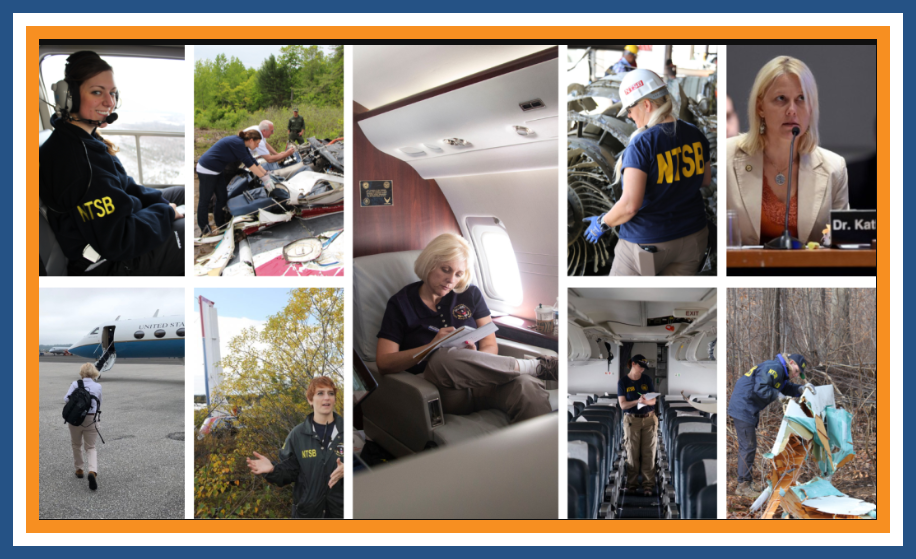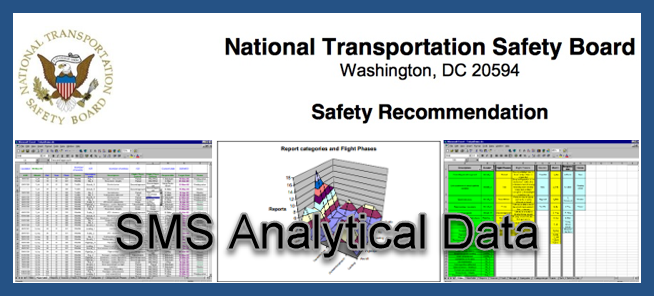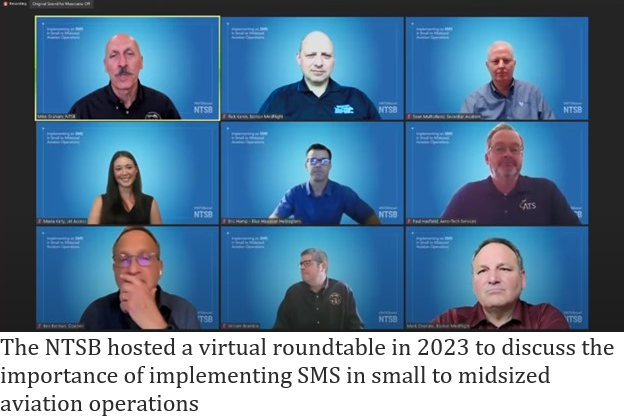NTSB talks SMS and its data’s power, but does not release its

Below is a page of a recent NTSB Safety Compass Blog. THE BOARD SELF CONGRATULATES ITS PAST EIGHT SAFETY RECOMMENDATIONS AS THE CATALYST FOR THE FAA’S MOST RECENT EXPANSION OF 14 CFR PART 5 TO THREE ADDITIONAL HOLDERS OF AVIATION AUTHORITY. There is no doubt that the relevant safety discipline, Safety Management System (SMS), have greatly reduced the risks of each sector as it has been applied.

The NTSB is an advocate, while the FAA is the government authority responsible for implementation. The Board Chair may issue a press release and minutes thereafter her message hits the news. In contrast, the FAA Administrator can define a new regulatory regimen and the agency staff can start to draft the initiative’s goals in practicable and practical terms– what is required of the aviation entity to comply with this new rule. Applying a broad concept like SMS to, for example, a large P121 carrier can be more easily implemented by an organization with extensive resources. Following this hypothetical to an air tour operator is not a “cut and paste” exercise of transferring the large airline’s requirements to the smaller entity. Before a draft may be proposed, the FAA has found it prudent, if not necessary, to consult with the staff of this regulated body to learn what works with their limited staff and yet provides the FAA with a basis to enforce the SMS mandate. If the new rule is not practically implementable by the “regulate”, the courts will likely deny that the regulator has set a reasonable standard that a judge will affirm.
The NTSB’s frustration with the FAA’s lethargy is obvious, but its insinuation that the delay is mere laxity is unfair.
The NTSB’s blog repeatedly touts the value of SMS:
- “OUR DEDICATION TO PROMOTING SMS IN OTHER AVIATION SECTORS…”
- “…raising awareness and driving action toward SMS implementation…”
- “…demonstrating the power of collaborative efforts in advancing aviation safety standards…”
The major advance of SMS is making safety a preventative discipline. With the power of mega computers and programs that can analyze the meta data sets into risk rankings, aviation can now identify a potential problem, design a range of remedies and act on them BEFORE it becomes real. The power of collecting and combining, from around the globe, a series of issues–that might NOT be flagged based on one event—provides a basis for predicting an otherwise unidentified risk. SMS’S GREATEST VALUE OF ITS QUANTIFICATION OF RISKS—PROBABILITIES BASED ON DATA THAT SUPPORTS PREVENTATIVE ACTION.

The NTSB INVESTIGATES and based on its assessment(s) it issues recommendations. That determination presumably involves some quantification of the size of the risk, the likelihood of its blossoming to a problem and thus the Board’s issuance of its report. These statements do not include these data!!! The airline, operator, OEM, pilot, mechanic or entity must now decide WHEN (how fast), WHAT and WHETHER NTSB’s issue merits grounding of flights, recalls of equipment or whatever response may be necessary. An SMS driven aviation organization, as a matter of practice, would begin those numbers which the Board ostensibly would calculate as a predicate to its public pronouncements.
TO TRULY ADVOCATE SMS AS THE MOST POWERFUL AVIATION SAFETY TOOL, IT WOULD APPEAR INCUMBENT UPON THE NTSB TO INCLUDE ITS SMS CALCULATIONS IN ITS ACTION.

++++++++++++++++
FROM ADVOCACY TO ACTION: THE NTSB’S LONGSTANDING ADVOCACY SPURS FAA’S NEW SMS MANDATE
Anthony Lam, NTSB Transportation Safety Specialist, Office of Safety Recommendations and Communications

In a significant move toward enhancing aviation safety, the Federal Aviation Administration (FAA) RECENTLY MANDATED SAFETY MANAGEMENT SYSTEMS (SMSS) FOR PART 135 OPERATORS, PART 91.147 AIR TOUR OPERATORS, AND CERTAIN AIRCRAFT MANUFACTURERS. This ruling comes in response to the pressing need for proactive safety measures in revenue passenger-carrying operations. The NTSB swiftly responded to this development in a recent press release, commending the FAA for its decisive action while also stressing the need for further measures to ensure comprehensive protection for all passengers.
The journey toward this milestone ruling has BEEN MARKED BY THE NTSB’S LONGSTANDING ADVOCACY FOR SMS IMPLEMENTATION IN REVENUE PASSENGER-CARRYING OPERATIONS. The NTSB made its first aviation safety recommendation on SMS in 2007. This recommendation led the FAA to require commercial air carriers (Part 121) to implement an SMS. The agency’s ongoing advocacy for these systems in other revenue passenger-carrying operations is evidenced by six open safety recommendations to the FAA regarding SMS between 2016 and 2022, namely:
- A-16-36: Require all Part 135 operators to establish safety management system programs.
- A-19-28: Require all commercial air tour operators, regardless of their operating rule, to implement a safety management system.
- A-21-13: Require SMSs for the revenue passenger-carrying operations addressed in Safety Recommendations A-21-9 and -10.
- A-21-14: For the revenue passenger-carrying operations addressed in Safety Recommendations A-21-9 and -10, provide ongoing oversight of each operator’s SMS once established.
- A-21-48: Require organizations that design, manufacture, and maintain aircraft to establish a safety management system.
- A-22-15: Develop guidance for small operators for scaling a safety management system that includes methods and techniques for implementation and specific examples applicable to several operational sectors, including air tours

Additionally, NTSB advocacy events and initiatives on SMS, such as our 2020 Part 135 safety panel discussion, 2021 NTSB blog post, and 2023 SMS virtual roundtable on the importance of implementing SMS in small to midsized aviation operations further UNDERSCORE OUR DEDICATION TO PROMOTING SMS IN OTHER AVIATION SECTORS. These advocacy events and initiatives, among others, highlight the critical role of proactive safety measures in aviation operations and underscore the NTSB’s dedication to promoting SMS in the aviation sector.

[Editorial Note: only 1 of nine panelists is smiling.]
The NTSB’s advocacy efforts, including the aforementioned events and initiatives, have played a crucial role in raising awareness and driving action toward SMS implementation in revenue passenger-carrying operations. These initiatives have paved the way for the FAA’s recent mandate, demonstrating the power of collaborative efforts in advancing aviation safety standards.
As we celebrate this milestone, it is imperative to acknowledge the collective efforts of all stakeholders involved. Moving forward, continued collaboration and proactive measures will be essential to addressing evolving risks and ensuring the comprehensive protection of passengers and crews alike. Together, we will continue to build a safer sky for all.

+++++++++++++++++++++++